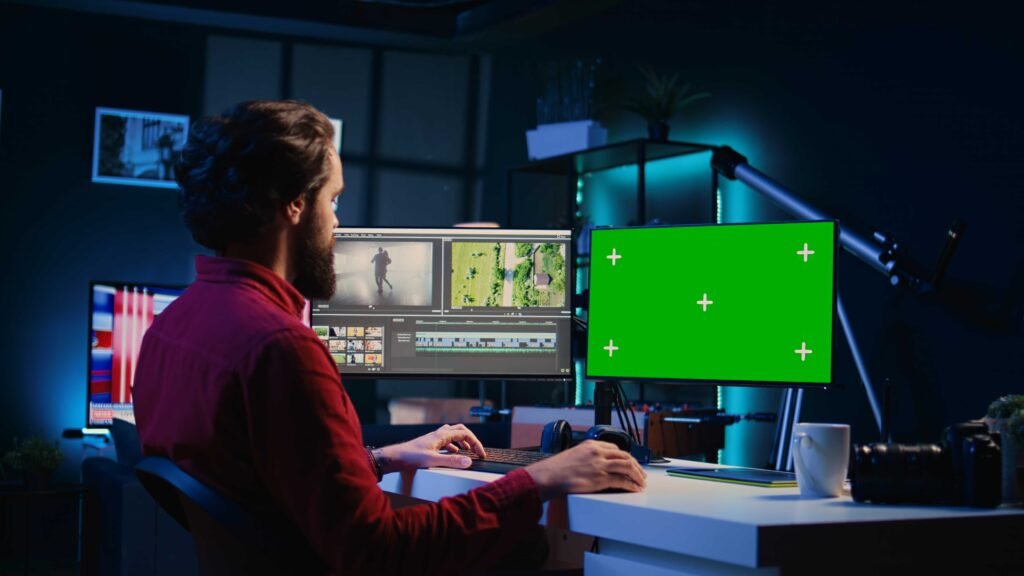Indian cinema is entering a new era where visual effects are at the heart of storytelling. From RRR to Brahmāstra, audiences now expect the same level of spectacle as global blockbusters. This rising demand has made enrolling in a vfx course one of the smartest moves for aspiring filmmakers in 2025.
Technological advancements such as real-time rendering, AI, and virtual production are reshaping how films are made. What once required massive Hollywood budgets is now achievable in India at competitive costs. For students aiming to build sustainable film careers, mastering VFX is not just a supporting skill—it’s becoming a core foundation.
This blog highlights how VFX is transforming Indian filmmaking, the technologies driving demand, the career opportunities available, and why structured education is the key to staying relevant in this fast-changing industry.
The Transformative Role of VFX in Modern Indian Filmmaking
VFX is no longer just an add-on—it’s central to how stories are told in cinema today. Filmmakers rely on it to craft immersive worlds, manage budgets, and experiment with narratives that go beyond live action.
Shaping Storytelling with Visual Effects
Modern films often rely on VFX to transport viewers to imagined universes. For example:
- Mythological dramas recreate ancient kingdoms without massive physical sets.
- Sci-fi thrillers build futuristic landscapes using CGI.
- Action films choreograph stunts with digital doubles, reducing risk.
This flexibility allows storytellers to take creative risks that traditional methods would restrict.
Increasing Budget Allocation to VFX in Indian Films
In the past, VFX was less than 5% of a film’s budget. Today, it often consumes 25–40% in big releases.
- Brahmāstra reportedly allocated over ₹100 crore to visual effects.
- RRR used VFX in over 2,800 shots, making it comparable to Hollywood productions.
- Even mid-budget films are now reserving significant funds for CGI and compositing.
Expanding Applications Beyond Films
VFX isn’t just for cinema anymore.
- Advertising: Brands use VFX to create striking campaigns on tight deadlines.
- Web series: OTT platforms rely heavily on CGI-driven content.
- Gaming: Cinematic cutscenes require the same skill sets as films.
- Virtual Production: Digital environments are replacing outdoor shoots in many industries.
This means aspiring filmmakers with VFX training can explore multiple career paths, not just film.
Key Technological Trends Driving the Need for VFX Education
The rapid evolution of technology is transforming the creation of visual effects. Students who train in these tools today will be ahead of the curve in 2025.
AI and Automation in VFX
AI is streamlining repetitive tasks:
- Rotoscoping and masking can be automated, saving hours of manual work.
- Machine learning tools enhance motion capture and face replacement.
- This allows artists to focus more on creativity than repetitive labor.
Real-Time Rendering with Game Engines
Engines like Unreal and Unity are now used for filmmaking.
- Directors can preview final-quality shots on set.
- Storytelling becomes interactive, allowing quick adjustments.
- This reduces production cycles and makes VFX more affordable.
Virtual Production Techniques
Studios are investing in LED backdrops and virtual sets. For example, The Mandalorian pioneered this globally, and Indian studios are quickly adopting it.
- Saves cost on international shoots.
- Allows controlled lighting and weather conditions.
Cloud-Based Collaboration
Global studios now rely on cloud workflows.
- Artists from Mumbai, London, and Los Angeles can work on the same project.
- Students familiar with cloud-based tools gain access to global freelance and studio roles.
Career Opportunities and Industry Growth in India’s VFX Sector
India is already one of the top outsourcing hubs for visual effects. By 2025, its domestic market will also rival global demand.
India’s Emergence as a Global VFX Hub
The latest EY Media & Entertainment report highlights that the sector touched INR 2.5 trillion (USD 29.4 billion) in 2024, with projections of INR 2.68 trillion in 2025, a 7.2% rise. Notably, digital media and online gaming now contribute 41% of total revenues, underscoring how VFX-driven content is at the center of industry growth.
Job Roles and Salary Expectations in VFX
Common roles include:
- VFX Artist: Entry-level, ₹3–5 LPA.
- Compositor: ₹4–7 LPA with mid-level growth.
- Animator: ₹5–10 LPA, especially in gaming and OTT.
- Motion Capture Specialist: ₹8–15 LPA, due to rising demand in films and gaming.
Government Support and Industry Initiatives
The Indian government has set up an AVGC (Animation, VFX, Gaming, Comics) task force. Initiatives include:
- State-level incentives for VFX startups.
- Training programs to address the skill gap.
- Subsidies for infrastructure like motion capture labs.
Global Collaborations and Outsourcing Trends
Indian VFX studios are increasingly part of Hollywood blockbusters.
- Prime Focus, MPC, and Red Chillies VFX have worked on Marvel films.
- Outsourcing ensures steady international projects and global exposure for Indian graduates.
Why Practical VFX Courses Are a Must for Aspiring Filmmakers
Theory alone won’t get jobs—hands-on training is critical. A structured VFX course helps students align classroom knowledge with industry expectations.
Bridging Theory and Real-World Application
Institutes now emphasize studio-like training. Students practice shot compositing, CGI modeling, and editing on real projects rather than just learning definitions.
Learning Emerging Technologies and Software
A strong VFX curriculum covers:
- Maya and Blender for 3D modeling.
- Nuke and After Effects for compositing.
- Unreal Engine for real-time rendering.
- AI-powered tools for automation and virtual production.
Developing a Competitive Edge in a Crowded Market
Every year, thousands enter the VFX job market. What makes candidates stand out is project work. Institutes partner with studios to provide internships, ensuring graduates graduate with demonstrable experience.
Building a Portfolio that Meets Industry Demands
A demo reel showcasing clean composites, 3D renders, and VFX breakdowns is often more critical than grades. Recruiters look for polished, varied reels that show creativity and technical mastery.
The Unique Value of VFX Education in India’s Current Context
India is uniquely positioned to offer both affordable and high-quality training.
Affordable and Accessible Quality Education
Compared to Western schools, Indian VFX programs cost a fraction but provide global-standard training. Many institutes offer scholarships or flexible payment plans for aspiring filmmakers.
Exposure to Industry Professionals and Networks
Institutes frequently invite professionals from leading studios for workshops. Networking at this stage often leads to internships or direct job offers.
Aligning with India’s Growing Film and Digital Media Ecosystem
With OTT platforms producing hundreds of shows annually, there is a constant demand for VFX specialists. Courses align curricula with these industry requirements, ensuring graduates are employable.
Empowering Independent and Regional Filmmaking
Regional industries in Tamil, Telugu, and Malayalam cinema are investing heavily in effects. Affordable VFX skills allow indie filmmakers to compete with mainstream studios by producing visually rich content on modest budgets.
Conclusion
The future of Indian filmmaking is inseparable from VFX. By 2025, visual effects will define how stories are told, marketed, and consumed. Enrolling in a VFX course is no longer optional—it’s a career necessity for filmmakers aiming to stay relevant.
- VFX expands creative storytelling possibilities.
- Technological changes demand trained professionals.
- Salaries and opportunities in India are steadily rising.
- Affordable education and global outsourcing make India a global hub.
For aspiring filmmakers, mastering VFX means building a creative toolkit that ensures both employability and artistic freedom. The Indian entertainment industry is evolving—and those equipped with VFX skills will lead its future.

